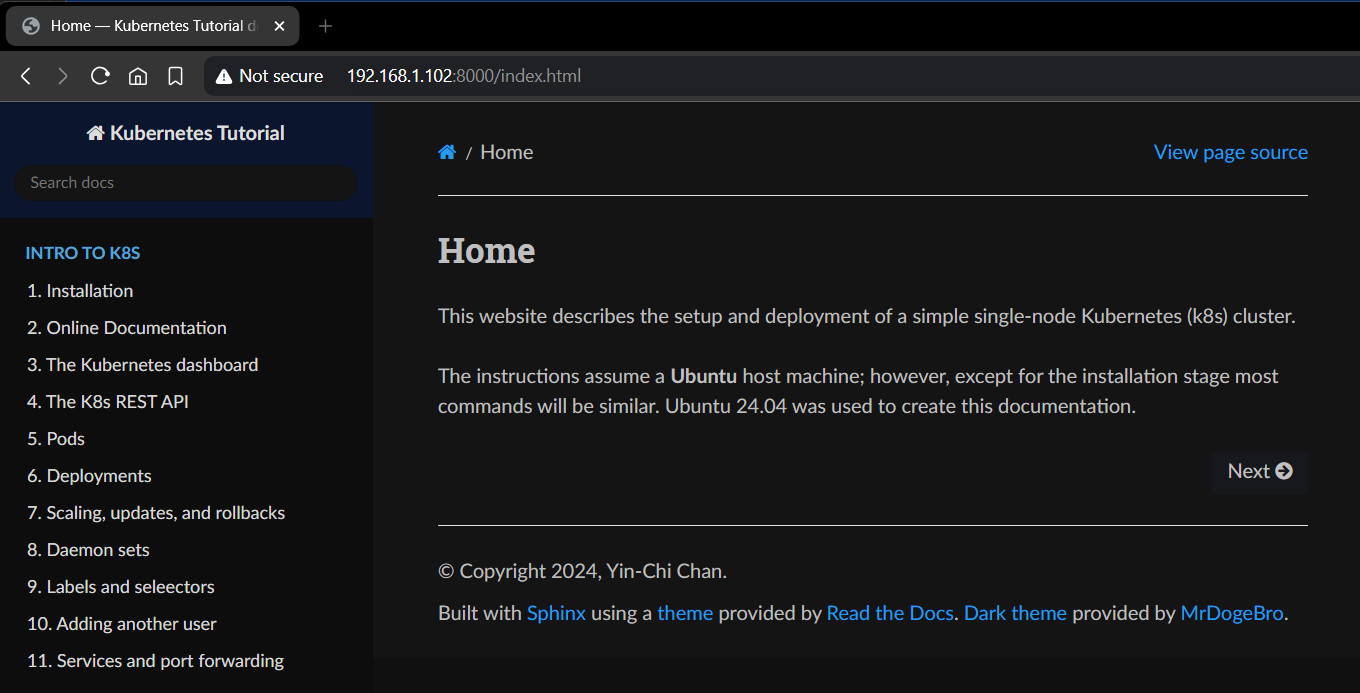13. Volumes
Volume types are described at https://kubernetes.io/docs/concepts/storage/volumes/
An ephemeral volume is linked to a pod and has the same lifespan as the pod, but is preserved across container restarts. One example of this is the
emptyvolume type.The
hostPathvolume type shares a directory between the host and the pod, similar to a bind mount in Docker.A config map is a section of a YAML file that is mounted into the pod.
Note that many of the volume types listed in the link above are deprecated in favor of the Container Storage Interface (CSI).
13.1. HostPath Example
First, since Minikube is running in a Docker container, we need to mount our own filesystem into the Docker container:
$ minikube mount $HOME:/hosthome
📁 Mounting host path /home/yinchi into VM as /hosthome ...
▪ Mount type: 9p
▪ User ID: docker
▪ Group ID: docker
▪ Version: 9p2000.L
▪ Message Size: 262144
▪ Options: map[]
▪ Bind Address: 192.168.49.1:36877
🚀 Userspace file server: ufs starting
✅ Successfully mounted /home/yinchi to /hosthome
📌 NOTE: This process must stay alive for the mount to be accessible ...
Next, we define the paths for mounting from Minikube into our deployment’s pod:
apiVersion: apps/v1
kind: Deployment
metadata:
creationTimestamp: null
labels:
app: mydocs
name: mydocs
spec:
replicas: 1
selector:
matchLabels:
app: mydocs
strategy: {}
template:
metadata:
creationTimestamp: null
labels:
app: mydocs
spec:
volumes:
- name: vol
hostPath:
path: /hosthome/k8s-docs/build/html
type: Directory
containers:
- image: nginx
name: nginx
ports:
- containerPort: 80
volumeMounts:
- mountPath: /usr/share/nginx/html
name: vol
Finally, in a new terminal, apply the deployment, expose it as a service, and forward the appropiate port:
$ kubectl create -f mydocs.yaml
deployment.apps/mydocs created
$ kubectl expose deploy mydocs --type=NodePort
service/mydocs exposed
$ kubectl port-forward --address 0.0.0.0,:: svc/mydocs 8000:80
Forwarding from 0.0.0.0:8000 -> 80
Forwarding from [::]:8000 -> 80

To verify that changes in the host filesystem are reflected in the pod, we can delete our files:
(.venv)$ make clean
Removing everything under 'build'...
Reloading the site now should result in an error.